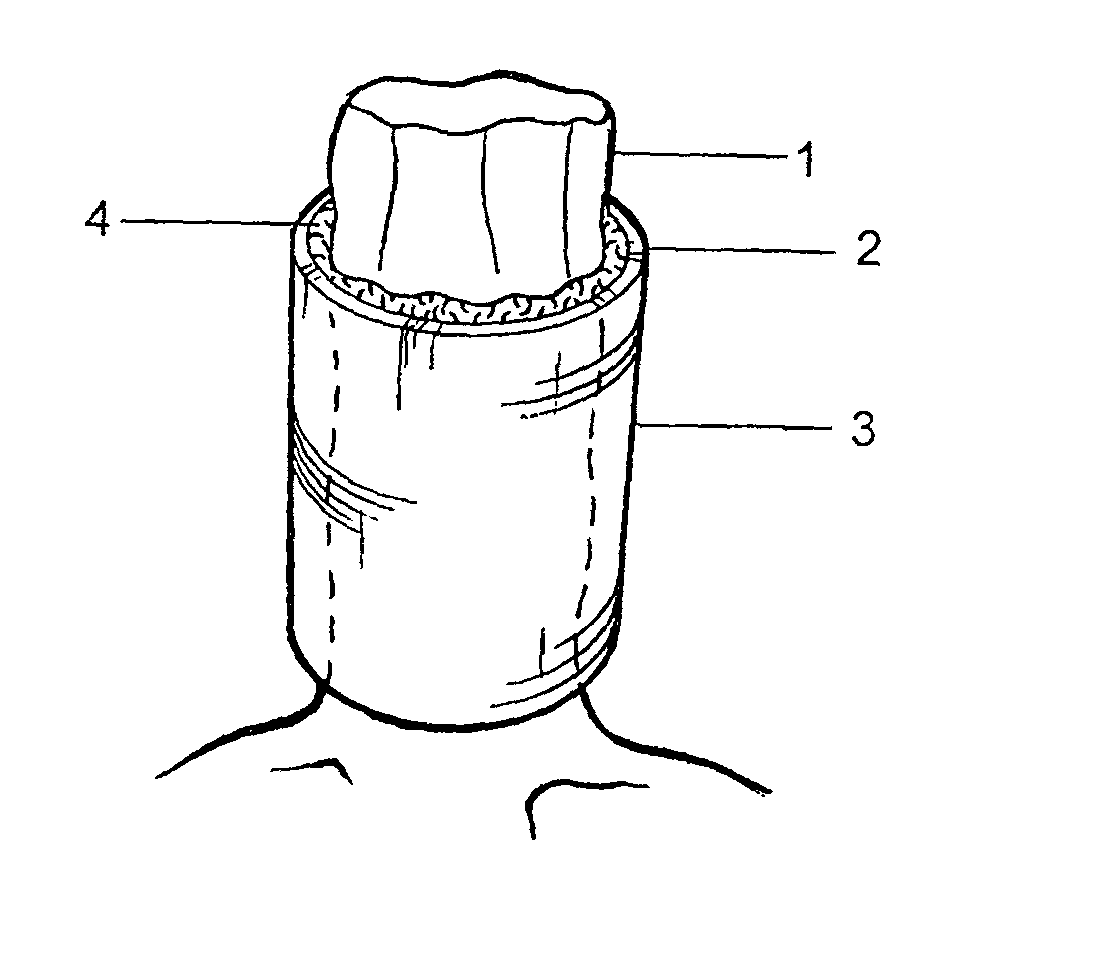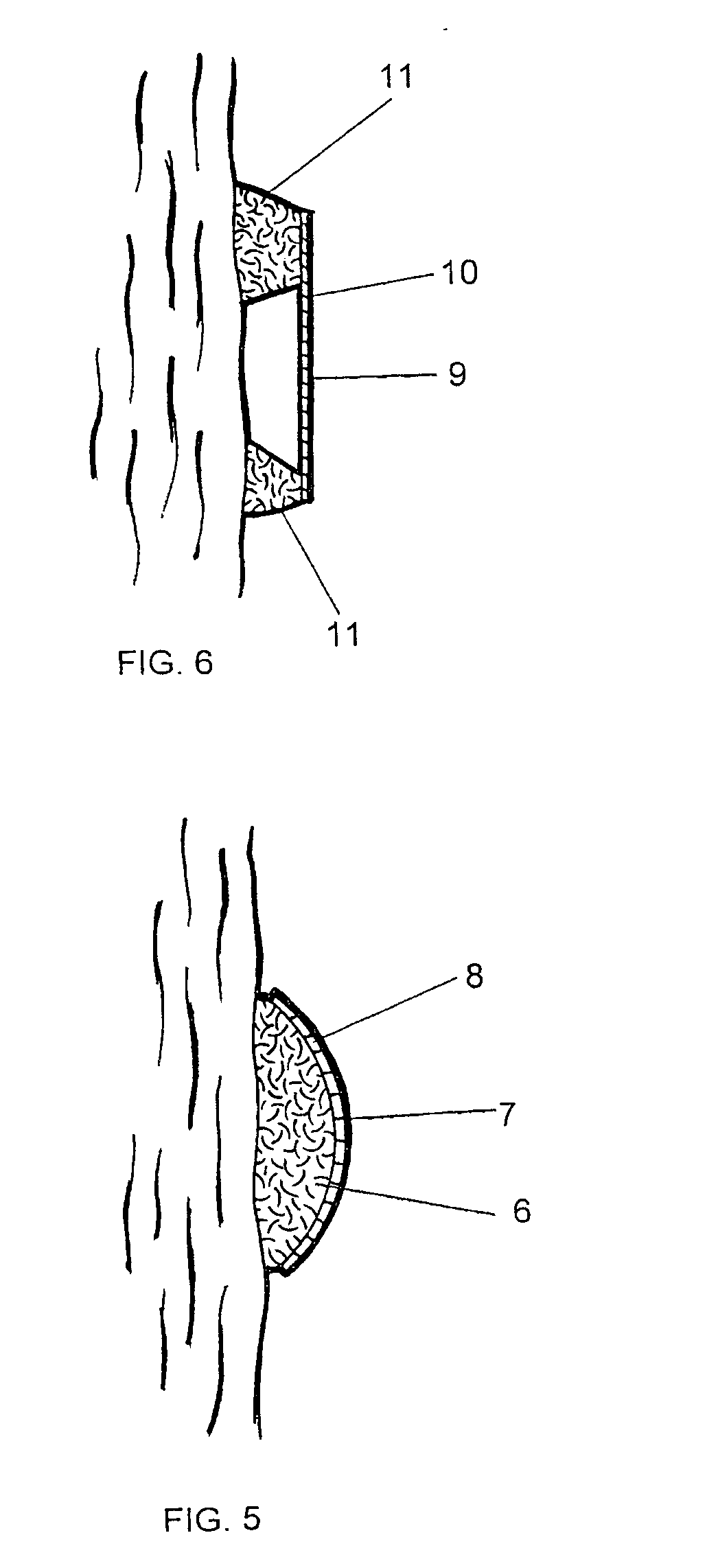System for protecting trees and structures against infestation
a tree and structure technology, applied in the field of tree and structure protection systems, can solve the problems of reducing the fruit and wood yield of the tree, increasing the vulnerability of the tree to diseases, and affecting the health of the tree,
- Summary
- Abstract
- Description
- Claims
- Application Information
AI Technical Summary
Benefits of technology
Problems solved by technology
Method used
Image
Examples
Embodiment Construction
[0035] FIG. 1 shows a perspective view of the insect barrier of the present invention as attached about a tree (1). The insect barrier has belt means (2), having a length and width, wherein the length of said belt means is circumferentially wrapped around the tree. The belt means has a slippery surface (3) with a low coefficient of friction with respect to insects, thereby disabling said insects from travelling thereon against gravity. The belt means may be formed of a flexible plastic sheet material, and the slippery surface may be provided by application of a coating to the belt means containing a fluoropolymer, such as PTFE. The belt means includes a contact means (4) comprising a layer of a material with a deformable thickness, such as a non-woven fabric, for engagement with the surface of the tree, thereby preventing the passage of insects between the barrier and the tree surface. The non-woven fabric material may be made of a plastic material or a fiberglass material. The cont...
PUM
 Login to View More
Login to View More Abstract
Description
Claims
Application Information
 Login to View More
Login to View More - R&D
- Intellectual Property
- Life Sciences
- Materials
- Tech Scout
- Unparalleled Data Quality
- Higher Quality Content
- 60% Fewer Hallucinations
Browse by: Latest US Patents, China's latest patents, Technical Efficacy Thesaurus, Application Domain, Technology Topic, Popular Technical Reports.
© 2025 PatSnap. All rights reserved.Legal|Privacy policy|Modern Slavery Act Transparency Statement|Sitemap|About US| Contact US: help@patsnap.com



